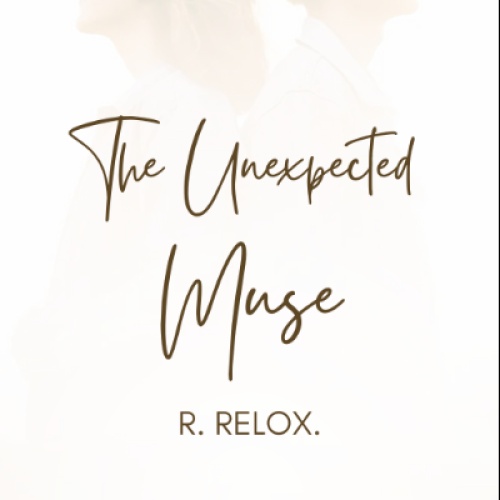The Parisian rain hammered against Elara's skylight, mirroring the emptiness inside. Her usually vibrant studio felt sterile; empty canvases leaned like accusing ghosts. Months of creative drought had dulled her spirit; the city's usual inspiration was lost to a deafening inner silence. She traced the rim of her chipped mug, the lukewarm caf� au lait doing little to warm her.
Then, a gust of wind snatched her sketchbook, sending it tumbling down the street. Just as despair threatened to overwhelm her, a hand - strong, gentle - intercepted it. Jean-Luc, a bookbinder with honey-colored eyes and ink-stained fingers, returned it. Their fingers brushed, sparking an unexpected warmth. His quiet strength resonated with her.
His workshop was a haven. The scent of leather and glue soothed her frayed nerves. They spent hours in companionable silence, the rhythm of their work a silent conversation. Jean-Luc shared whispered tales of forgotten books, their stories of life, love, and loss igniting her imagination. Elara shared her struggles, finding not sympathy, but understanding. His quiet support was a balm to her wounded spirit.
The Parisian sun, a rare visitor, bathed her studio in warmth. A slow awakening began. The blank canvases beckoned with the promise of new beginnings. Her palette, once dusty, gleamed with vibrant hues. She saw beauty in the mundane, poetry in the everyday. Her brush danced, guided by newfound confidence. She painted the intimacy of their shared silences, the unspoken stories whispered in the pages of restored books. She painted Jean-Luc, capturing his quiet strength and gentle warmth.
But a shadow loomed: Camille, a rival artist whose envy was as palpable as her perfume. Camille wasn't merely jealous; she was a meticulous strategist, her sabotage a carefully orchestrated campaign. She began with whispers and innuendo, subtly poisoning the well with hints suggesting Elara's success was due to Jean-Luc's influence, not her talent. She implied he was exploiting Elara. These whispers, carefully planted, gradually eroded Elara's reputation.
Camille's sabotage extended beyond gossip. She subtly tampered with Elara's supplies, replacing high-quality paints with inferior substitutes. She'd alter settings on Elara's digital art tools, causing frustrating glitches. She anonymously submitted poorly executed copies of Elara's paintings to galleries, attempting to discredit her style.
Her most audacious act was the public humiliation at the gallery opening. This wasn't spontaneous; it was carefully planned, ensuring influential critics and gallery owners witnessed Elara's embarrassment. She leaked information about Elara's personal struggles to the press, attempting to paint her as unstable.
Even more insidious was the stolen idea. Camille subtly changed elements of a new art series Elara was developing, making it seem original, but the core concept was undeniably Elara's. She secured a lucrative deal that should have been Elara's. In a final, desperate act, Camille planted evidence suggesting Elara had plagiarized one of Camille's less successful works.
A prestigious gallery in New York offered Elara a solo exhibition - a dream, but it meant six months apart from Jean-Luc. The decision weighed heavily on them, but they transformed a potential obstacle into a new source of inspiration. Their love would bridge the distance. The separation would be a test, but also a testament to their resilient love. Elara documented their experiences, creating an intimate connection with her growing subscriber base. Jean-Luc's letters became lifelines, their written correspondence a sacred space, their connection unbroken despite the miles.
Elara's time in New York was a battlefield within, a constant tug-of-war between loneliness and resilience. The loneliness was insidious - the silence, the anonymity, the emptiness - each a reminder of Jean-Luc's absence. It threatened to consume her, to stifle her creativity. But amidst this, a quiet resilience flickered. She channeled her loneliness into her art, transforming pain into powerful, emotive pieces. Each brushstroke became self-expression, articulating the swirling emotions. Jean-Luc's letters fueled her resilience, his words acts of support, affirmations of her strength. Their written correspondence became a sanctuary where their connection remained unbroken. Despite Camille's relentless attempts to undermine her, Elara persevered, her art becoming a testament to her strength and resilience. The revelation of Camille's sabotage, eventually uncovered, not only cleared Elara's name but also exposed Camille's character flaws, leading to her downfall and Elara's even greater triumph.
The internal conflict never fully resolved; loneliness and resilience coexisted. But in this tension, Elara found depth and authenticity that transformed her art and herself. She emerged not merely as a successful artist, but as a woman who had confronted her vulnerabilities and emerged stronger, her spirit tempered by loneliness and forged by resilience. Their love story, documented through her art and subscription service, became a testament to the power of inspiration, resilience, and enduring love. Their reunion was a celebration of a love that had weathered the storm, stronger and deeper than before.




